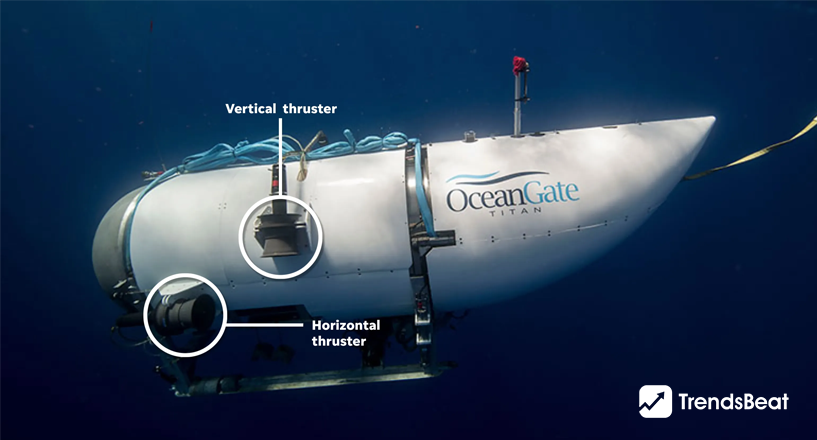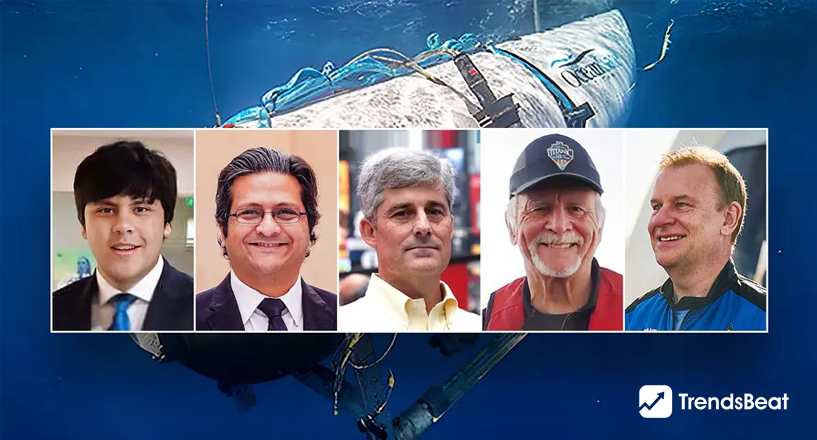Missing Titan Is Destroyed: What Happens During an Implosion

The United States Coast Guard stated on Thursday that the ‘Titan,’ a deep-sea submersible carrying five personnel on a trip to the century-old Titanic wreckage, was recovered in pieces following a “catastrophic implosion” that killed everyone aboard.
Search teams and support specialists from the United States, France, Canada, and the United Kingdom have spent days investigating thousands of square miles of open sea for signs of the Titan.
Even before the Coast Guard’s news conference, OceanGate published a statement indicating that none of the five personnel aboard the Titan survived. The five people included 58-year-old British millionaire and explorer Hamish Harding, 48-year-old British businessman Shahzada Dawood and his 19-year-old son Suleman, and 77-year-old French oceanographer and well-known Titanic expert Paul-Henri Nargeolet.
A Catastrophic Implosion Destroyed the Titan!
The Titan, operated by OceanGate Expeditions in the US, went missing after losing contact with its surface support ship early on Sunday morning, about an hour and a half into what was supposed to be a two-hour dive to the most famous shipwreck in the world.
Five primary components of the Titan, including the vessel’s tail cone and two portions of the pressure hull, were discovered in the debris field left after its breakup, according to Coast Guard authorities.

Due to the crushing pressure present in deep water, a “catastrophic implosion,” which destroyed the Titan submarine, would have occurred with extraordinary power and speed. The Titan’s depth at the time of its implosion is unknown. However, the traces of the Titanic, the ship that the submarine was seeking to explore, lie at a depth of roughly 3,800 meters (12,400 feet) in the North Atlantic. The water pressure at that level is roughly 6,000 pounds per square inch.
THE LOST SUB TITAN
The Titan, created by the OceanGate firm, had previously dived into the Titanic’s wreck. The vessel, which had a limited oxygen supply, vanished earlier this week after attempting a new dive into the water to investigate the wreck. To find the submersible, the US, Canadian, and French governments launched a huge search and rescue effort.
The US Coast Guard confirmed Thursday night that it had recovered Titanic debris near the site of the Titanic’s wreckage. According to officials, the debris from the lost submersible was “consistent with catastrophic loss of the pressure chamber.”
How the Implosion May Have Occurred?
Experts believe the implosion was caused by a flood or the vessel’s inability to endure water pressure.
“That kind of catastrophic event would have happened within 20 milliseconds,” University of Adelaide submarine specialist Eric Fusil told ABC News.
The Titan’s pressure hull was constructed of titanium and a carbon fiber composite material. In contrast, naval submarines are made of high-strength steel or titanium alloys.
“The titanium pressure vessel is very elastic; it can crush and then restore its initial shape,” Fusil said.
“But the carbon fibers are completely different; it’s something very stiff.”
He, on the other hand, said that the usage of carbon fire was an “experimental technology” and that it was too early to say if the design was to blame for the problems.

What Experts Says
According to Roderick Smith, an engineering professor at Imperial College in London, the tragedy was most likely caused by a “failure of the pressure hull,” but debris will need to be retrieved to conduct a thorough examination. Even then, determining the root cause may be challenging.
OceanGate published a statement remembering the five people onboard minutes before the US Coast Guard acknowledged the fatal deep-sea expedition.
“We now believe that our CEO Stockton Rush, Shahzada Dawood and his son Suleman Dawood, Hamish Harding, and Paul Henri Nargeolet have all sadly lost,”
OceanGate said in a statement.
“These men were true explorers with a strong sense of adventure and a strong desire to explore and protect the world’s oceans.”
During this awful moment,
“Our hearts go out to these five people and every one of their families. We sorrow the loss of their lives and the joy they offered to everyone they knew.”















































































![Essential-Cybersecurity-Tips-for-Small-Businesses-[Protect-Your-Data]-TrendsBeat](https://trendsbeat.com/wp-content/uploads/2023/05/Essential-Cybersecurity-Tips-for-Small-Businesses-Protect-Your-Data-feature-image-template-1024x455.jpg)


















![Top Fitness Trends & Workout Routines to Follow [Stay Fit, Stay Healthy]](https://trendsbeat.com/wp-content/uploads/2023/04/feature-image-Top-Fitness-Trends-Workout-Routines-to-Follow-Stay-Fit-Stay-Healthy-1024x455.jpg)










![[Weight Loss Medication Health Effects] Side Effects and Best Advice](https://trendsbeat.com/wp-content/uploads/2023/04/feature-image-Weight-Loss-Medication-Health-Effects-Side-Effects-and-Best-Advice-1024x455.jpg)



